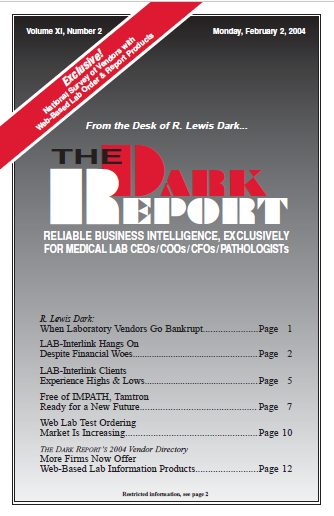CEO SUMMARY: Tamtron’s fortunes look much brighter with its acquisition by IMPAC Medical Systems, Inc., a healthcare information vendor with existing products for radiation oncology, medical oncology, and urology. IMPAC’s strategy is to create a “total solution” for oncology. That means Tamtron’s anatomic pathology information system is expected to play a major role in IMPAC’s […]
To access this post, you must purchase The Dark Report.


